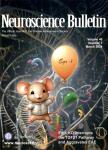Paraventricular Thalamus as A Major Thalamic Structure for Wake Control
Paraventricular Thalamus as A Major Thalamic Structure for Wake Control作者机构:Departments of Neuroscience Anatomy Histology and Embryology Key Laboratory of Preclinical Study for New Drugs of Gansu Province School of Basic Medical Sciences Lanzhou University Lanzhou 730000 China Integrative Physiology of the Brain Arousal Systems Lyon Neuroscience Research Center Lyon 69373 France
出 版 物:《Neuroscience Bulletin》 (神经科学通报(英文版))
年 卷 期:2019年第35卷第5期
页 面:946-948页
核心收录:
学科分类:0710[理学-生物学] 1002[医学-临床医学] 1001[医学-基础医学(可授医学、理学学位)] 10[医学]
基 金:supported by grants from the National Natural Science Foundation of China (81471347, 81771426, and 31500853) the Talent-Introducing Project of State Administration of Foreign Experts Affairs of China (X2017008)
主 题:Paraventricular Thalamus Thalamic Structure Wake Control
摘 要:The thalamus is the gate of the cerebral cortex, the ultimate target for the neural networks controlling behavioral states and cognitive functions. According to the reticular theory initially proposed by Moruzzi and Magoun, excitatory inputs from large reticular zones of the brainstem via widespread intra- and extra-thalamocortical systems finally activate the cerebral cortex to cause generalized cortical activation and wakefulness [1]. This theory proposes a central relay role to the thalamus for cortical activation as supported by early studies using neurodegeneration techniques and by the elegant work of Steriade’s group and other investigators illustrating the electrophysiological mechanisms of the thalamocortical system at the cellular level during wakefulness, rapid eye-movement sleep (REMs) and non-REM sleep (NREMs)[2].



